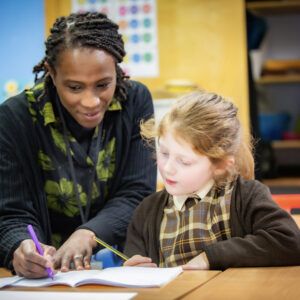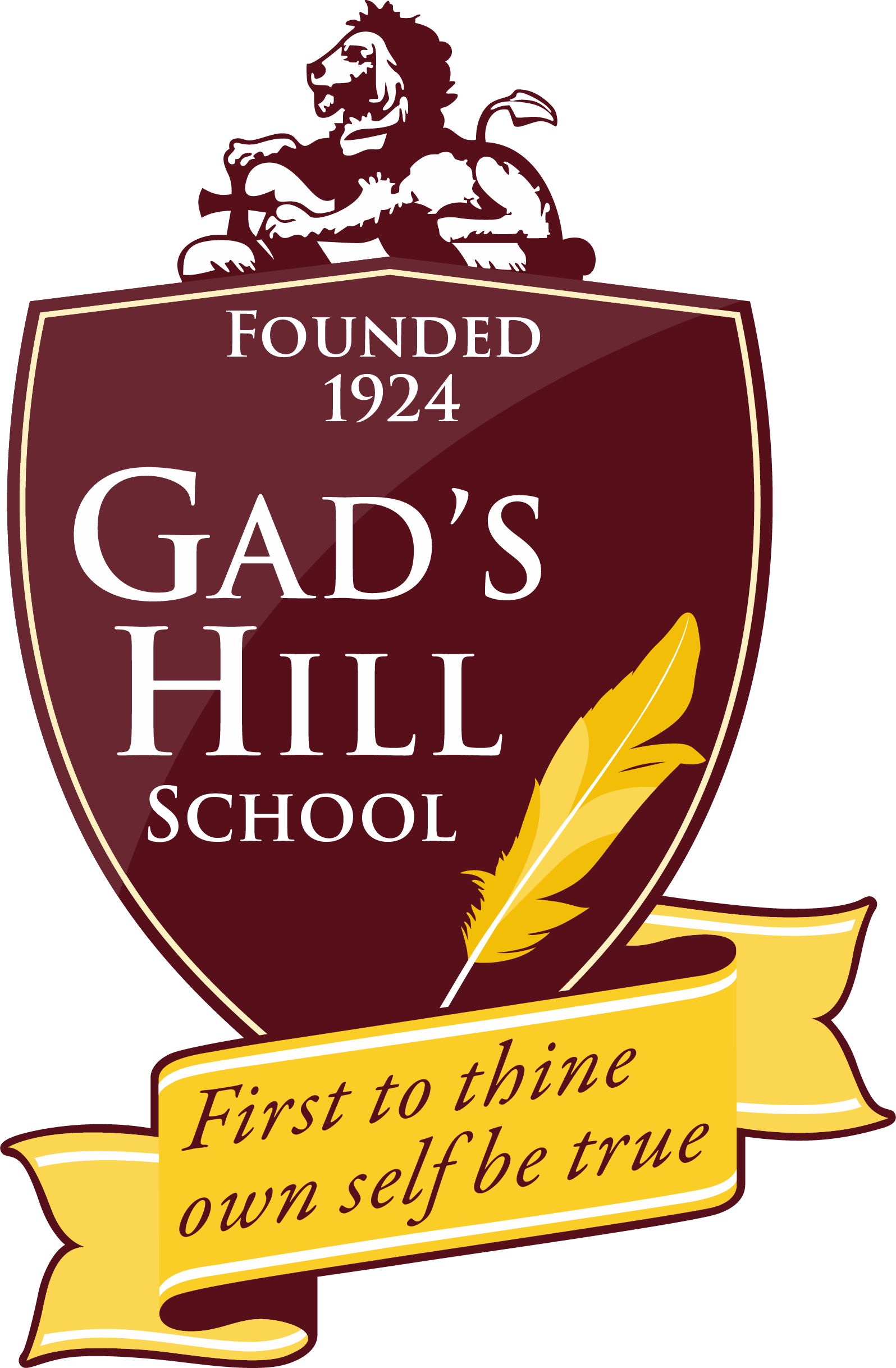
Art
Art and Design is an essential part of the One Curriculum because it engages, inspires and challenges pupils, equipping them with knowledge and skills to experiment, invent and create their own works of art, craft and design. Pupils develop their social and cultural understanding of artists in the past, present and looking to future trends. Pupils can express themselves in creative and original ways using a range of materials, techniques and processes to create personal and meaningful outcomes.
Lower School
Lower School
Art at Gad’s Hill challenges pupils to explore creativity while developing critical thinking, resilience, and self-expression. Through a structured progression of artistic skills and techniques, children learn to communicate ideas visually and reflect on the world around them. From early mark-making to more advanced media and methods, the curriculum encourages experimentation, imagination, and personal voice.
In the Early Years Foundation Stage (EYFS), children begin their artistic journey through sensory exploration, imaginative play, and hands-on creative experiences. These early encounters with colour, texture, and form lay the groundwork for confident self-expression and a lifelong appreciation of the arts. As our pupil’s progress through the Lower School, they learn to further refine their skills in a range of media, create large scale personalised artworks and build a strong contextual knowledge of artists and designers to inspire their creative foundations.
We believe Art fosters imagination, cultural awareness, and problem-solving—skills, essential for success in school and beyond.
At Gad’s Hill, we are proud to offer a curriculum that not only meets academic standards but also nurtures the whole child—preparing them for a future full of possibilities.

Upper School
Upper School
Art at Gad’s Hill School encourages creativity, critical thinking, and self-expression. It offers students the opportunity to develop a personal visual language and to appreciate the role of art and design in both historical and contemporary contexts. Art provides a platform for students to explore ideas, emotions, and culture, making it a key component of a well-rounded education.
Skills, Knowledge, and Values
Through Art, students build key transferable skills such as observation, analysis, problem-solving, and communication. They gain hands-on experience in a variety of media, techniques, and processes, from drawing and painting to printmaking, sculpture, and digital art. The subject also nurtures patience, resilience, and open-mindedness—values essential for both personal growth and collaboration.
Key Themes and Topics Studied
Some examples of our diverse range of themes studied include:
- Nature and the environment
- Cultural and historical influences
- Abstraction and imagination
- Design and 3D Art
- Animals and our world
These topics are explored through both practical and theoretical approaches, often linking with cross-curricular themes and global artistic movements.
Progression of Knowledge and Skills
Students begin with foundational techniques such as line, tone, colour theory, and composition. As they progress, they develop more advanced skills in media manipulation, conceptual thinking, and critical analysis. By the time they reach GCSE level, pupils are producing highly personal and sophisticated portfolios, showcasing independence and creative maturity.
Wider Learning and Enrichment
Art supports broader learning by enhancing visual literacy, emotional intelligence, and cultural awareness. It often links with subjects such as History, English, and Science, fostering interdisciplinary understanding. It also helps pupils develop time management and project-planning skills, particularly during extended coursework projects. Pupils are given lots of opportunities to enter into external Art competitions including that of the annual ISA Arts Competition and the Royal Academy of Young Artists competition across the school.
Future Pathways
Art prepares students for further study at GCSE, A-Level, and beyond in areas such as Fine Art, Graphic Design, Architecture, Fashion, and Photography. It also develops creative thinking and portfolio skills valuable in a wide range of careers including marketing, media, interior design, and product development. Most importantly, it fosters confidence and originality—qualities that benefit pupils in all walks of life.

Lower School
Art at Gad’s Hill challenges pupils to explore creativity while developing critical thinking, resilience, and self-expression. Through a structured progression of artistic skills and techniques, children learn to communicate ideas visually and reflect on the world around them. From early mark-making to more advanced media and methods, the curriculum encourages experimentation, imagination, and personal voice.
In the Early Years Foundation Stage (EYFS), children begin their artistic journey through sensory exploration, imaginative play, and hands-on creative experiences. These early encounters with colour, texture, and form lay the groundwork for confident self-expression and a lifelong appreciation of the arts. As our pupil’s progress through the Lower School, they learn to further refine their skills in a range of media, create large scale personalised artworks and build a strong contextual knowledge of artists and designers to inspire their creative foundations.
We believe Art fosters imagination, cultural awareness, and problem-solving—skills, essential for success in school and beyond.
At Gad’s Hill, we are proud to offer a curriculum that not only meets academic standards but also nurtures the whole child—preparing them for a future full of possibilities.

Upper School
Art at Gad’s Hill School encourages creativity, critical thinking, and self-expression. It offers students the opportunity to develop a personal visual language and to appreciate the role of art and design in both historical and contemporary contexts. Art provides a platform for students to explore ideas, emotions, and culture, making it a key component of a well-rounded education.
Skills, Knowledge, and Values
Through Art, students build key transferable skills such as observation, analysis, problem-solving, and communication. They gain hands-on experience in a variety of media, techniques, and processes, from drawing and painting to printmaking, sculpture, and digital art. The subject also nurtures patience, resilience, and open-mindedness—values essential for both personal growth and collaboration.
Key Themes and Topics Studied
Some examples of our diverse range of themes studied include:
- Nature and the environment
- Cultural and historical influences
- Abstraction and imagination
- Design and 3D Art
- Animals and our world
These topics are explored through both practical and theoretical approaches, often linking with cross-curricular themes and global artistic movements.
Progression of Knowledge and Skills
Students begin with foundational techniques such as line, tone, colour theory, and composition. As they progress, they develop more advanced skills in media manipulation, conceptual thinking, and critical analysis. By the time they reach GCSE level, pupils are producing highly personal and sophisticated portfolios, showcasing independence and creative maturity.
Wider Learning and Enrichment
Art supports broader learning by enhancing visual literacy, emotional intelligence, and cultural awareness. It often links with subjects such as History, English, and Science, fostering interdisciplinary understanding. It also helps pupils develop time management and project-planning skills, particularly during extended coursework projects. Pupils are given lots of opportunities to enter into external Art competitions including that of the annual ISA Arts Competition and the Royal Academy of Young Artists competition across the school.
Future Pathways
Art prepares students for further study at GCSE, A-Level, and beyond in areas such as Fine Art, Graphic Design, Architecture, Fashion, and Photography. It also develops creative thinking and portfolio skills valuable in a wide range of careers including marketing, media, interior design, and product development. Most importantly, it fosters confidence and originality—qualities that benefit pupils in all walks of life.

